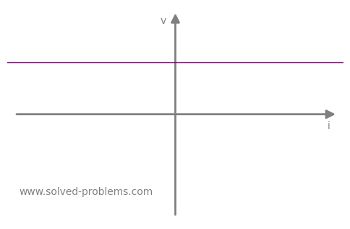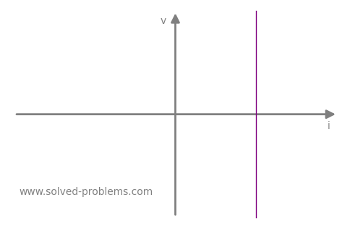1) Ideal Independent Voltage Sources
An ideal independent voltage source is a two-terminal circuit element where the voltage across it
a) is independent of the current through it
b) can be specified independently of any other variable in a circuit.
There are two symbols for ideal independent voltage source in circuit theory:


The battery cell symbol is usually used for constant voltage sources but the other one is more general and can be used for both variable and constant voltage sources.
The v-i plot for an ideal independent voltage source is shown below.

In a circuit, voltage across elements which are parallel with voltage sources are equal to the voltage of the corresponding voltage sources. This is a useful rule in solving circuits. For example, check out the following problem.
[[416]]
2) Ideal Independent Current Sources
In contrast to ideal independent voltage sources, an ideal independent current source is a two-terminal circuit element where the current passing through it
a) is independent of the voltage across it
b) can be specified independently of any other variable in a circuit.
There is one symbol for ideal independent current source in circuit theory:

The v-i plot for an ideal independent current source is depicted below.

Similar to voltage sources, the charactristic of ideal independent current sources can also be used to solve circuits (or a portion of a circuit) where an element is in series with a current source. Lets consider the following solved problem.
Leave a Reply